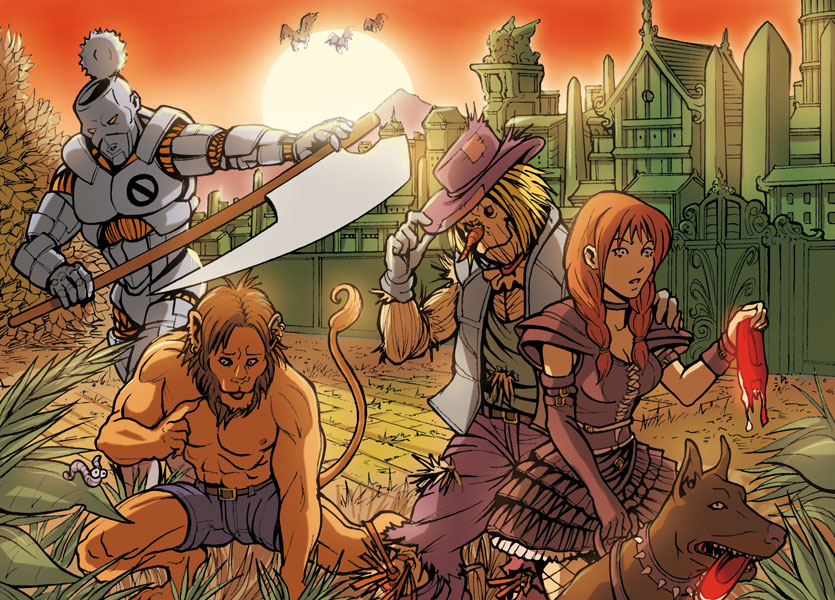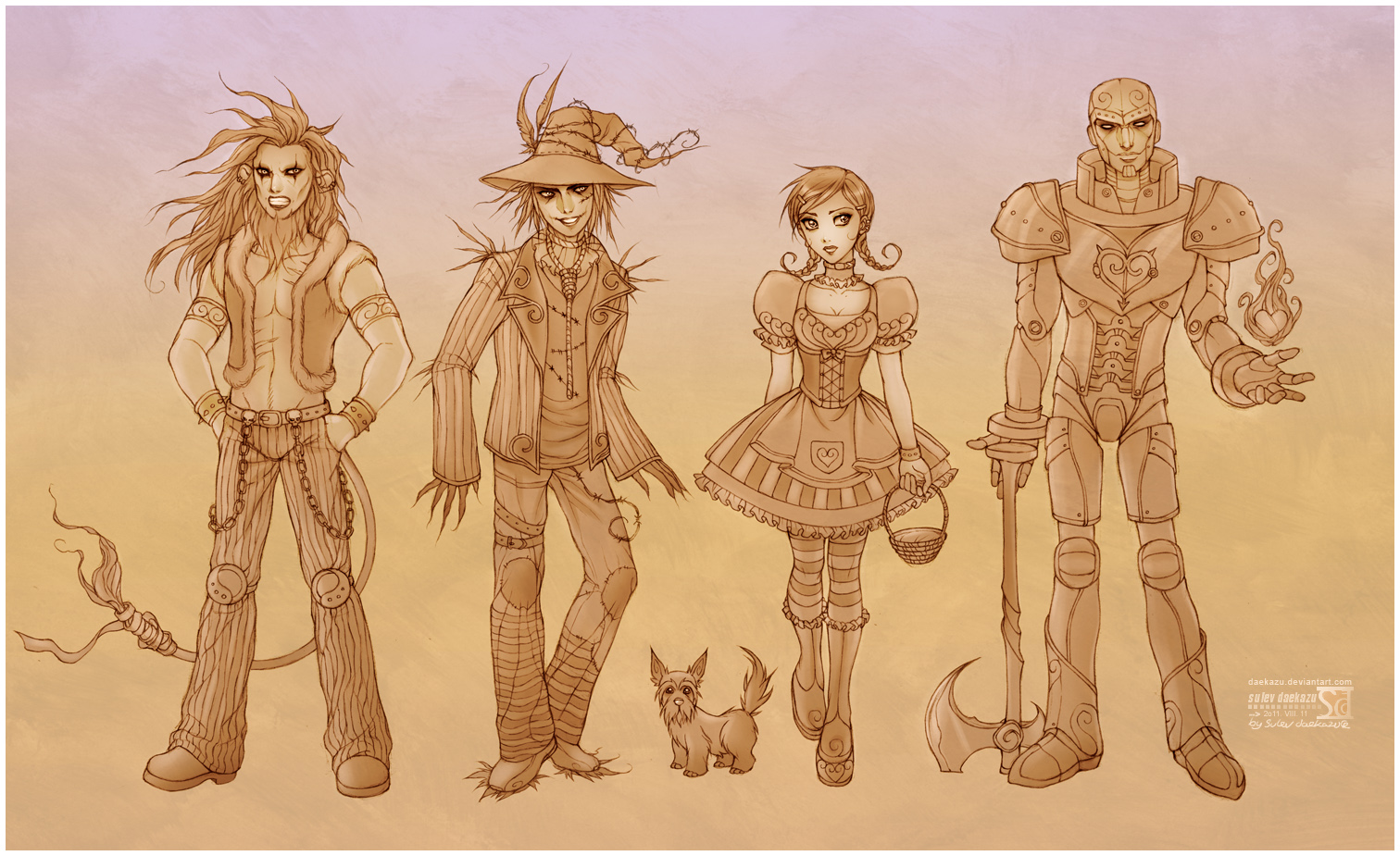In the previous article we talked about the possibilities of using L. Frank Baum's Oz as a replacement for the Feywild. But there are a few misconceptions DMs will want to address before they do.
 Picture By Александр Коротич - Own work, CC BY-SA 4.0, File:Иллюстрация к сказочному сериалу Л.Ф.Баума "Страна Оз" 09.jpg - Wikimedia Commons
Picture By Александр Коротич - Own work, CC BY-SA 4.0, File:Иллюстрация к сказочному сериалу Л.Ф.Баума "Страна Оз" 09.jpg - Wikimedia Commons
All of the reasons listed above may be why there is such variety in adapting Oz to role-playing games. You can view how I tackled these issues in my campaign and in the upcoming Kickstarter-funded Adventures in Oz for 5E.
In the next article, we'll create a basic framework for domains and how they interact with both NPCs and PCs.
Your Turn: What common misconceptions about fantasy campaigns make your game unique?
It's Just for Kids
The Wizard of Oz movie has cemented the Oz series as a G-rated setting where nobody gets hurt (more on that later) and it all works out in the end. The Oz series may have started out that way under Baum but it certainly didn't adhere to the standards we might expert for modern kid fare. Later books feature flying disembodied heads (reminiscent of vargouilles) who try to cut off the heroes' limbs, a person assembled from glued together body parts, and a wizard execution. An entire war is waged over Santa Claus. The ingredients are there for Oz to be as dark or as light as you want it to be, but it is not strictly a kid-friendly setting.Nobody Dies
There is a common belief that nobody in Oz can die. The authors (Baum and Thompson) regularly flouted these rules, implying that sufficient damage could kill a person, or that mortal visitors (like Dorothy) still might come to harm. The Wicked Witch stays dead, after all. But because these are children's books, the authors rarely test the limits of this rule. Also, outside of Oz this rule doesn't apply, so the rest of Nonestica is still a dangerous place. The aforementioned war over Christmas resulted in the deaths of several of the humanoid monsters who fought against the immortals.Nobody Ages
It's true that no one ages in Oz. Or rather, they stop aging when they choose to do so. Dorothy visits the real world and to her horror begins growing older; she manages to return to Oz and back to her younger self. There's also several Princes who choose to stop aging whenever they like, then resume aging as they see fit. How this affects the population is anyone's guess, but it has far-reaching implications for nation building. In Nonestica, this rule doesn't apply either.Everything is Peaceful
In later books, Ozma names the former pirate Captain Salt her Royal Explorer, who then sets out to explore the Nonestic Ocean, claiming each island he comes across as conquered by Oz. He's polite enough about it, explaining that it's to everyone's benefit, but it definitely feels like a lopsided arrangement where the small island nations don't have much of a choice in the matter. Thompson takes this to its logical conclusion when the Tin Woodman on an ozoplane (a magical zeppelin) attempts to claim the cloud island (also known as a "skyland") of Stratovania, only to have the resident Airlanders stage a counter-invasion in response.Everything Talks
Animals talk in Oz, which means there are few dumb beasts. And if every animal can talk, not all of them may be okay with traditional service roles as pack animals or mounts. When everything can talk, simply having a mount means having a NPC with opinions. This rule doesn't apply outside to the rest of Nonestica, although the authors invent different talking animals to fill the gap.Oz is Outdated
There were a lot of racist assumptions built into the Oz books. While Baum was a pioneer in pushing for women's rights in his Oz (the leaders and protagonists of Oz are all female) and even dabbled in discussions of gender fluidity with the Cherub (of John Dough and the Cherub) and Ozma herself (who was originally a boy named Tip), there were still some unpleasant assumptions about modern peoples that cropped up in his work, specifically The Woggle-Bug Book, which places the titular character in America. Things got worse under Oz author Ruth Plumly Thompson, who created caricatures of non-American cultures in her books. Taking that content out doesn't harm the cohesiveness of Nonestica as a whole, but it's important to be aware of these biases when adapting a world like this to a game for modern audiences.All of the reasons listed above may be why there is such variety in adapting Oz to role-playing games. You can view how I tackled these issues in my campaign and in the upcoming Kickstarter-funded Adventures in Oz for 5E.
In the next article, we'll create a basic framework for domains and how they interact with both NPCs and PCs.
Your Turn: What common misconceptions about fantasy campaigns make your game unique?





